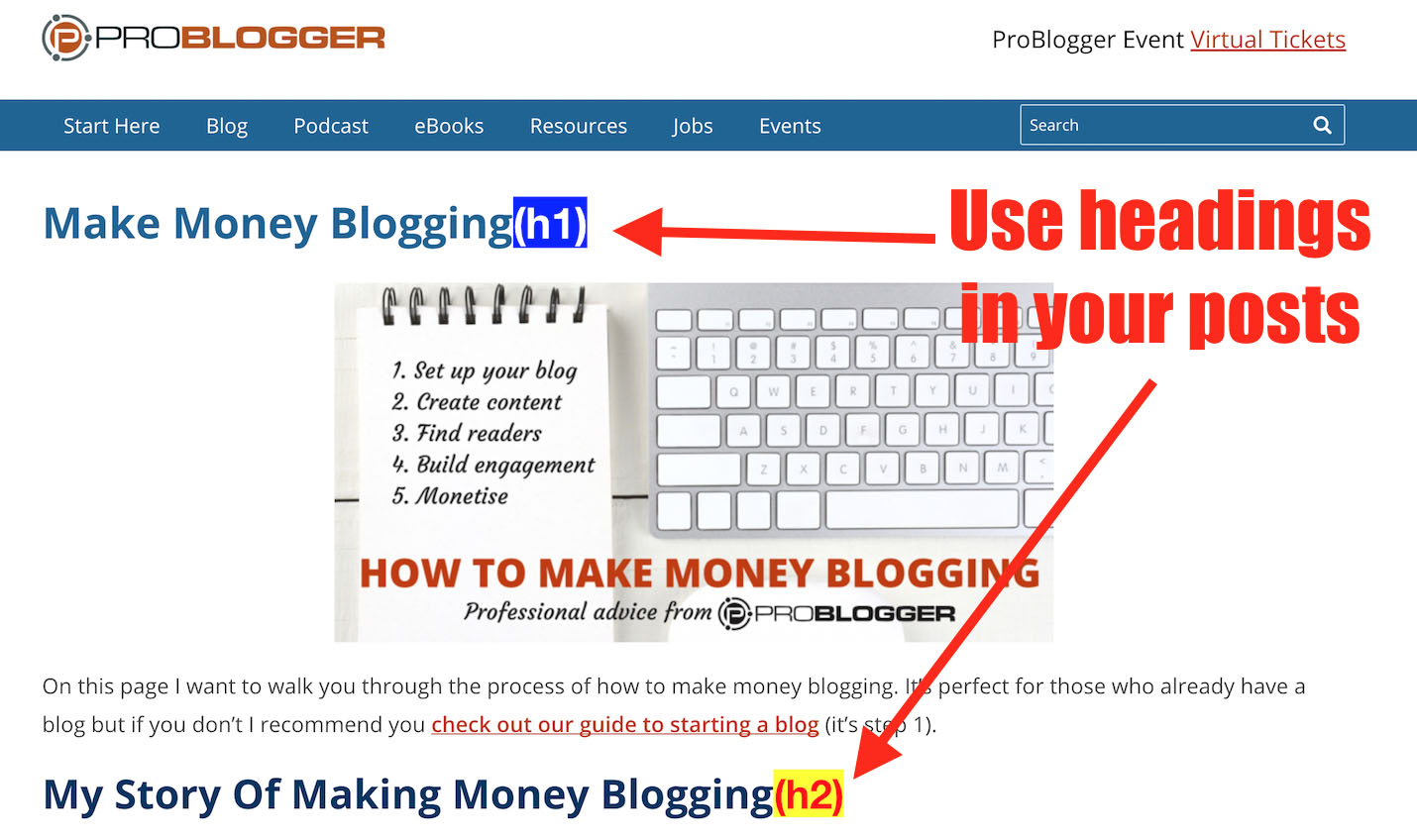ProBlogger: How To Structure Your Blog Content For Great Rankings | |
| How To Structure Your Blog Content For Great Rankings Posted: 13 Dec 2016 05:00 AM PST From ProBlogger SEO expert Jim Stewart of Bloggers SEO. Content may be king, but if you don’t optimise your blog content in a way that Google likes, your readers will never find it. Structuring your content in a way that Google understands means higher rankings across your entire site. This makes your blog more visible to readers searching for your topic, and more likely to show up near the top of the page when they search for your niche. But how do you know what Google is looking for? Search engine optimisation, or SEO, is simply a way of organising the content on your site so that it’s more likely that Google will understand it. It’s a process like anything else, and it can be tricky considering all the updates Google sends out. Stick to the fundamentals of content structuring and you’ll see a definite improvement in your rankings. Search Engine Optimisation FundamentalsKeywordsChoose one or two long-tail keywords to focus on when optimising your blog posts. These are strings of words that readers might use to look for the content on your blog. The idea is not to stuff as many keywords as possible into your work, but to concentrate on just one or two and rank well for them. For the best results, pick one keyword string to emphasise per post, and one secondary string, if any. Everything on your page should relate back to these two keywords, and you should incorporate them in specific parts of your blog page. Blog Post Page Title The page title is the first thing your readers see, usually in a link that has been shared or in the search results. More importantly, it’s the first thing that Google will see. The page title should tell Google and the reader what the post is about. If you want to rank for a specific phrase, you'll need to use it here. Include the keyword within the first 50-60 characters of your page title. If you have a long title, use your keywords at the beginning. Google stops displaying after 60 characters, so anywhere past that is getting too long. Body and Headers Most blog CMS/Themes typically will use the page title as the URL and as a H1 at the start of the page. Remember, good SEO is about good content structure, so use your headings accordingly. Don't have multiple H1s on a page, H2s should follow H1s, and H3s should follow H2s, etc. Each section header should have one of the two keywords incorporated into them. Try to use the same keyword in the first paragraph directly after the header, and use it in a natural manner in the text. URL Include the keyword in the page URL. Search engines look there to find your page’s relevance, so make sure to include a keyword string in each one. Your CMS or blog theme may just use the page title for the URL, which is perfectly fine. Meta Description Your meta description is designed to sum up your blog post in one short sentence. The meta description is limited to a maximum 160 characters and should summarise your page. Include your keyword string to ensure your readers and Google alike know exactly what your page is about. Usually it will be shown in search results, so make it something that people want to click. Your Blog ContentGetting past the mechanics of putting keywords in the technical spaces in your blog, it’s also important to optimise the actual content that you’re publishing. You’ve set up the framework, now what about the interior? Images Blog posts don’t only contain text. Great posts also include images to break up a visual wall of text and add interest for the readers. Google can’t really see images, so you have to add alt text to tell it what it’s seeing. You can also use the title element for an image so when a user places their mouse over it more information appears about the image. This is helpful for Google and the user. In addition, captions are a great way to use your keywords as well as offer more information about the image. Finally, with images, don't forget to use a filename that is descriptive and contains your keywords. Content Google likes posts that reference other posts on the site, as long as they have a logical reference point. Use your keywords as an anchor text to link another post on your site. An easy way to do this is to create a series of posts on the same subject, then daisy chain the links between all of them. It shows authority over the subject, since you obviously have a lot to say about it, and it organises a way for readers to follow your thread. Google likes authority sites, those sites that have many different posts on the same subject. It proves knowledge, which Google values when assigning rank. If you structure your content this way, every post you write will have a great opportunity to rank. Just remember to write for the reader and structure it properly for Google. Jim Stewart, CEO of BloggersSEO, is a recognised digital marketing expert. Jim is ProBlogger's SEO expert and will share his vast SEO knowledge to equip you with the systems and skills to optimise and monetise your blog using tried and tested techniques. What Jim doesn't know about SEO and blogging isn't worth knowing. The post How To Structure Your Blog Content For Great Rankings appeared first on ProBlogger. |
| You are subscribed to email updates from ProBlogger. To stop receiving these emails, you may unsubscribe now. | Email delivery powered by Google |
| Google Inc., 1600 Amphitheatre Parkway, Mountain View, CA 94043, United States | |





0 comments:
Post a Comment